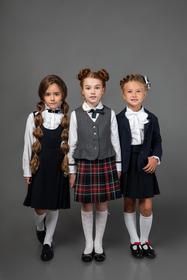Siletz Valley Early College Academy, also known as Siletz Valley School, is a public charter high school in Siletz, Oregon, United States. The school opened in 2006 with funding from the Chinook Winds Casino and from a grant provided by the Bill and Melinda Gates Foundation.
Serving 235 students in grades Kindergarten-12, Siletz Valley Schools ranks in the bottom 50% of all schools in Oregon for overall test scores (math proficiency is bottom 50%, and reading proficiency is bottom 50%).
The percentage of students achieving proficiency in math is 6-9% (which is lower than the Oregon state average of 31%). The percentage of students achieving proficiency in reading/language arts is 15-19% (which is lower than the Oregon state average of 44%).
The student-teacher ratio of 14:1 is lower than the Oregon state level of 17:1.
Minority enrollment is 60% of the student body (majority American Indian), which is higher than the Oregon state average of 42% (majority Hispanic).
Quick Facts (2025-26)
- School Type: Charter School
- Grades: Kindergarten-12
- Enrollment: 235 students
- Student-Teacher Ratio: 14:1
- Minority Enrollment: 60%
- Graduation Rate: ≥50% (Btm 50% in OR)
- Overall Testing Rank: Bottom 50%
- Math Proficiency: 6-9% (Btm 50%)
- Reading Proficiency: 15-19% (Btm 50%)
- Science Proficiency: 11-19% (Btm 50%)
- Source: National Center for Education Statistics (NCES), OR Dept. of Education
Top Rankings
Siletz Valley Schools ranks among the top 20% of public schools in Oregon for:
Category
Attribute
Diversity
Student Attention
School Overview
Siletz Valley Schools's student population of 235 students has grown by 89% over five school years.
The teacher population of 17 teachers has grown by 70% over five school years.
School Type
Grades Offered
Grades Kindergarten-12
(Supplemental Virtual)
(Supplemental Virtual)
Total Students
235 students
Gender %
Total Classroom Teachers
17 teachers
Year Founded
2006
School Motto
To create a nurturing environment, foster a love of learning, motivate students to reach their full potential, and provide opportunities for students to achieve academic and social success.
School Rankings
Siletz Valley Schools ranks within the bottom 50% of all 1,174 schools in Oregon (based off of combined math and reading proficiency testing data).
The diversity score of Siletz Valley Schools is 0.72, which is more than the diversity score at state average of 0.60. The school's diversity has stayed relatively flat over five school years.
Overall Testing Rank
#1148 out of 1174 schools
(Bottom 50%)
(Bottom 50%)
Math Test Scores (% Proficient)
6-9%
31%
Reading/Language Arts Test Scores (% Proficient)
15-19%
44%
Science Test Scores (% Proficient)
11-19%
30%
Student-Teacher Ratio
14:1
17:1
American Indian
29%
1%
Asian
n/a
4%
Hispanic
12%
26%
Black
n/a
3%
White
40%
58%
Hawaiian
1%
1%
Two or more races
18%
7%
All Ethnic Groups
Graduation Rate
≥50%
81%
Eligible for Free Lunch
79%
51%
Eligible for Reduced Lunch (21-22)
3%
8%
School Statewide Testing
School District Name
Source: National Center for Education Statistics (NCES), OR Dept. of Education
School Notes
- School Mascot: Warrior
Profile last updated: 02/09/2025
Frequently Asked Questions
What is Siletz Valley Schools's ranking?
Siletz Valley Schools is ranked #1148 out of 1,174 schools, which ranks it among the bottom 50% of public schools in Oregon.
What schools are Siletz Valley Schools often compared to?
Siletz Valley Schoolsis often viewed alongside schools like Toledo Senior High School, Toledo Elementary School by visitors of our site.
What percent of students have achieved state testing proficiency in math and reading?
6-9% of students have achieved math proficiency (compared to the 31% OR state average), while 15-19% of students have achieved reading proficiency (compared to the 44% OR state average).
What is the graduation rate of Siletz Valley Schools?
The graduation rate of Siletz Valley Schools is 50%, which is lower than the Oregon state average of 81%.
How many students attend Siletz Valley Schools?
235 students attend Siletz Valley Schools.
What is the racial composition of the student body?
40% of Siletz Valley Schools students are White, 29% of students are American Indian, 18% of students are Two or more races, 12% of students are Hispanic, and 1% of students are Hawaiian.
What is the student-teacher ratio of Siletz Valley Schools?
Siletz Valley Schools has a student ration of 14:1, which is lower than the Oregon state average of 17:1.
What grades does Siletz Valley Schools offer ?
Siletz Valley Schools offers enrollment in grades Kindergarten-12 (Supplemental Virtual).
What school district is Siletz Valley Schools part of?
Siletz Valley Schools is part of Lincoln County School District.
School Reviews
2 10/10/2025
My child has been in the Siletz school system since begining school.
At the age of 6.5 he was unable to read and reccomended to special education.
He changed schools for 5 months with in that time he was not only NOT headed to special education, but he was able to learn to read and write to a 2.1 grade level. This unbelivable progress indicates to me that the teaching staff, and the school at large was not seriving this child. Proffesional Staff Development is soreley need at this school.
Review Siletz Valley Schools. Reviews should be a few sentences in length. Please include any comments on:
- Quality of academic programs, teachers, and facilities
- Availability of music, art, sports and other extracurricular activities
Recent Articles

Public School Open House & Enrollment Season Guide
A parent-focused guide to the public school open house and enrollment season, with expert questions, timelines, and decision tips.

School Supply Budget 2026: Fees, Books, Tech Costs
School Supply Budget 2026 guide for parents, covering fees, textbooks, technology, and hidden extras to plan ahead.

Education Funding in America (2025 Update)
Comprehensive 2025 update on public school funding in America, new federal and state policies, per-pupil spending, and equity challenges.





